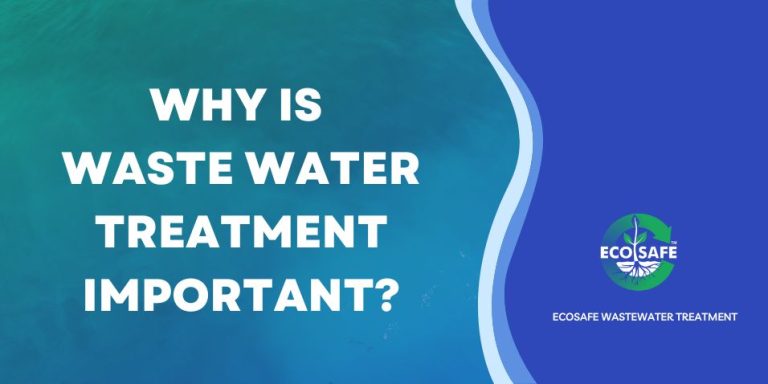Reclaim Waste - Truths
Reclaim Waste Fundamentals Explained
Table of ContentsThe Greatest Guide To Reclaim WasteA Biased View of Reclaim WasteSome Known Incorrect Statements About Reclaim Waste Reclaim Waste for BeginnersReclaim Waste Can Be Fun For Anyone
Check out the types, incidents, and forms of liquid waste. Domestic sewer waste refers to the waste and products from a residential septic system. This kind of waste is created by humans in houses, institutions, and various other structures. This only consists of septic systems that have a drainpipe area. The correct management and disposal of residential sewage waste require fluid waste to be transferred to a sewer treatment plant where the appropriate approaches and equipment are related to cleanse and deal with waste.
Industrial waste usually consists of possible risks, such as flammable products or a mixture of liquid and solid waste items, and requires an advanced and detailed disposal procedure. The disposal of commercial waste generally includes the filtration of waste before transport to ensure secure and appropriate disposal. Industrial waste is created from by-products and runoff of industrial processes and production.
This type of waste can not use the same sewer management transportation or procedures as septic or business liquids. The hazardous waste monitoring procedure needs the inspection and screening of fluid waste prior to it goes through the disposal procedure (liquid waste removal). Drainage waste is the fluid waste that originates from runoff and excess stormwater in extremely booming areas or cities
Drainage waste can trigger contamination and flooding if not taken care of appropriately. Discover much more concerning sewer cleaning and waste management. Making certain correct waste administration can stop catastrophes and minimize ecological damage. Both individuals in household setups and specialists in industrial or production industries can profit from understanding the procedures and regulations of fluid waste administration.
Some Ideas on Reclaim Waste You Need To Know
Call PROS Providers today to learn more about our waste monitoring and disposal services and the proper ways to take care of the liquid waste you generate.
(https://slides.com/reclaimwaste1)Do you understand what happens to your water when you disengage, flush the commode or drain the cleaning device? No? Well, it deserves knowing. This so-called 'wastewater' is not only an important resource yet, after therapy, will certainly be launched to our land, rivers or the sea. Utilized water from bathrooms, showers, baths, kitchen sinks, laundries and commercial procedures is referred to as wastewater.

water used to cool equipment or tidy plant and equipment). Stormwater, a type of wastewater, is overflow that flows from farming and metropolitan locations such as roofings, parks, gardens, roads, courses and gutters right into stormwater drains, after rainfall. Stormwater streams neglected directly to neighborhood creeks or rivers, ultimately getting to the ocean.
More About Reclaim Waste
In Queensland, many wastewater is treated at sewage treatment plants. Wastewater is transported from residential or industrial websites through a system of sewers and pump terminals, understood as sewerage reticulation, to a sewage therapy plant.
The Department of Natural Resources recommends regional governments concerning handling, operating and preserving sewerage systems and treatment plants. In unsewered areas, neighborhood governments may require owners to install individual or house sewage therapy systems to deal with residential wastewater from bathrooms, cooking areas, restrooms and laundries. The Division of Natural Resources authorizes using house systems when they are shown to be efficient.
Most stormwater obtains no therapy. In some new communities, therapy of some stormwater to get rid of litter, sand and crushed rock has started utilizing gross contaminant traps. Wastewater treatment takes place in 4 phases: Removes strong issue. Larger solids, such as plastics and other things wrongly released to drains, are removed when wastewater is travelled through screens.
Wastewater after that streams right into large tanks where solids work out and are eliminated as sludge. Oil and residue are skimmed from the surface area. Makes use of tiny living microorganisms called micro-organisms to damage down and remove remaining dissolved wastes and great bits. Micro-organisms and wastes are integrated in the sludge. Gets rid of nitrogen and phosphorus nutrients that can trigger algal blooms in our waterways and threaten marine life.
The smart Trick of Reclaim Waste That Nobody is Talking About
Nutrient elimination is not offered at all sewage therapy plants due to the fact that it calls for expensive specialized devices. Clear fluid effluent generated after treatment might still contain disease-causing micro-organisms - industrial wastewater treatment.

This normally means wastewater needs to be treated or contaminants eliminated before it can be released to waterways. The majority of wastewater moves into the sewerage system. Under the Act, city governments administer approvals and permits for ecologically relevant tasks (Ages) entailing wastewater launches that might have a local effect. The department provides approvals and licences to Periods involving wastewater launches that could have a local or statewide effect.
Reclaim Waste Things To Know Before You Buy
Tracking offers factual info regarding water quality and can verify that permit conditions are being met. The information obtained through monitoring supplies the basis for making water quality choices.